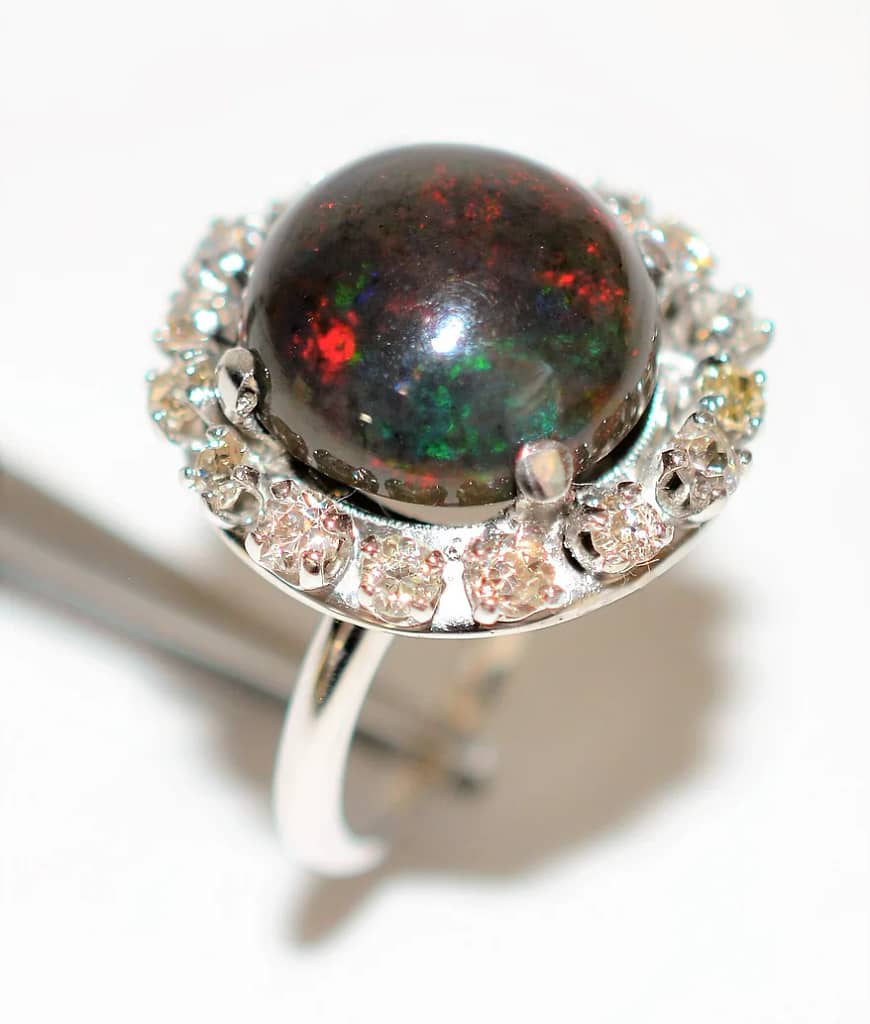From Wikipedia, the free encyclopedia
Red beryl
Beryl-23651.jpg
General
Category Cyclosilicate beryl
Formula
(repeating unit) Be
3Al
2Si
6O
18 with a mix of Mn3+
ions
Crystal system Hexagonal
Space group P6/mcc
Identification
Color Dark red
Twinning Extremely rare
Mohs scale hardness 7.5-8
Streak white
Ultraviolet fluorescence None
Red beryl, formerly known as bixbite and marketed as red emerald or scarlet emerald, is an extremely rare variety of beryl as well as one of the rarest minerals on Earth.[1][2][3]: 19 The gem gets its red color from manganese ions embedded inside of beryllium aluminium cyclosilicate crystals.[1] The color of red beryl is stable up to 1,000 °C (1,830 °F). Red Beryl can come in various tints like strawberry, bright ruby, cherry, and orange.[4]
The largest crystals of red beryl are about 2 cm (0.79 in) wide and 5 cm (2.0 in) long. However, most crystals are under 1 cm (0.39 in) long.[1] Recently, the red variety of Pezzottaite has been sold in markets as red beryl by some sellers.[5]
From Wikipedia, the free encyclopedia
Musgravite
Musgravit-G-EmpireTheWorldOfGems.jpg
Musgravite from Sri Lanka
General
Category Oxide minerals
Formula
(repeating unit) (Mg,Fe,Zn)2BeAl6O12
Strunz classification 04.FC.25
Crystal system Trigonal
Identification
Color Grey green to green
Fracture Conchoidal
Mohs scale hardness 8–8.5
Luster Vitreous
Diaphaneity Transparent
Specific gravity 3.62–3.68
Optical properties Uniaxial
Refractive index nω = 1.739, nε = 1.735
Birefringence δ = 0.014 to 0.016
References [1][2]
Musgravite or magnesiotaaffeite-6N’3S is a rare oxide mineral used as a gemstone. Its type locality is the Ernabella Mission, Musgrave Ranges, South Australia, for which it was named following its discovery in 1967.[2] It is a member of the taaffeite family of minerals,[2][1] and its chemical formula is Be(Mg, Fe, Zn)2Al6O12. Its hardness is 8 to 8.5 on the Mohs scale.[2] Due to its rarity, the mineral can sell for roughly USD$35,000 per carat.










